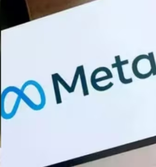Amazon-owned live game streaming platform Twitch is reportedly laying off 35 per cent of its workforce, or about 500 employees, this week….reports Asian Lite News
Amazon is reportedly laying off several hundreds of employees in its Prime Video and MGM Studios.
Mike Hopkins, Senior Vice President of the division, announced the cuts in an email on Wednesday, saying that the reason for the reduction is to “reduce or discontinue investments in certain areas while increasing our investment and focus on content and product initiatives that deliver the most impact”, reports TechCrunch.
The company has also started to notify the affected workers in the US and will inform most other regions by the end of this week.
Affected employees are provided with packages that include separation payments, transitional benefits, and external career transition support, the report mentioned.
“Our prioritisation of initiatives that we know will move the needle, along with our continued investments in programming, marketing and product, positions our business for an even stronger future,” Hopkins said.
Meanwhile, Amazon-owned live game streaming platform Twitch is reportedly laying off 35 per cent of its workforce, or about 500 employees, this week. Twitch laid off dozens of employees last year, and has shut down its service in South Korea due to “prohibitively expensive” costs.
According to a Bloomberg report, the fresh job cuts, “which could be announced as soon as Wednesday”, come amid concerns over losses at Twitch.

Meta Joins Layoff Club
Meta has started the New Year with laying off some technical programme managers (TPMs) at Instagram and reports said that at least 60 such jobs are either being consolidated or eliminated.
According to a post on Blind, an anonymous forum and community for verified tech employees, the company has given these employees time until the end of March to re-interview for product management roles or other jobs.
A verified Meta professional noted in the thread that job cuts “will soon (be) expanded to other orgs for TPMs”.
It means other technical programme managers at Meta may also find their roles consolidated or reorganised away.
“Meta layoffs: all TPMs in Instagram laid off today. Confirmed by my spouse who works there. She is not in the Instagram org and not affected. Product managers are not affected,” read another Blind post.
According to Business Insider, at least 60 such employees have lost their jobs.
TPMs are somewhere positioned between technical workers like engineers and product managers (PMs).
A former Instagram employee posted to LinkedIn about “expected changes to TPM roles,” saying that people are expected to “re-interview for PM roles” or product manager roles.
Meta did not immediately comment on these layoffs.
After planned mass layoffs last year, Meta Founder and CEO Mark Zuckerberg has not denied “that more jobs would be eliminated in the future”.
According to the report, he was still aiming to reduce the company’s overall headcount to that of 2020 before it went on the mass hiring spree.
In March last year, Zuckerberg announced the company would cut 10,000 jobs in the coming months, along with newly reorganised teams and management hierarchies.
The fresh cuts came just four months after Meta laid off 11,000 employees, or 13 per cent of the company’s workforce, in November 2022.

Google Axes AR Staff
Google is laying off hundreds of hardware employees, especially in the augmented reality (AR) division while Fitbit co-founders James Park, Eric Friedman and other Fitbit leaders are reportedly leaving the company.
Google had acquired wearable company Fitbit for $2.1 billion in 2019.
“A few hundred roles are being eliminated in DSPA (Devices and Services) with the majority of impacts on the 1P AR Hardware team,” a Google spokesperson said in a statement.
The Devices & Services teams are responsible for Pixel, Nest, and Fitbit devices. “While we are making changes to our 1P AR hardware team, Google continues to be deeply committed to other AR initiatives, such as AR experiences in our products, and product partnerships,” the spokesperson told 9to5Google.
The company said that it remains committed to “serving our Fitbit users well, innovating in the health space with personal AI, and building on the momentum with Pixel Watch, the redesigned Fitbit app, Fitbit Premium service, and the Fitbit tracker line”.
“This work will continue to be a key part of our new org model,” said the tech giant.
Google is switching to a functional organisation model where there will be one team responsible for hardware engineering across Pixel, Nest, and Fitbit hardware. There will be a single leader for such products across all Google hardware, according to reports.
Google has shifted its work on AR to the Android and hardware teams.
ALSO READ: Essar to Set Up 1GW Green Hydrogen Project










